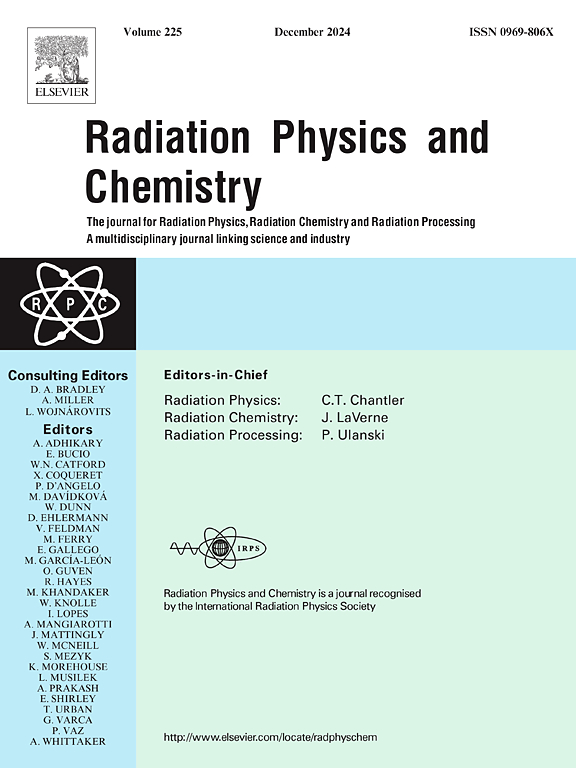快速伽马中子活化分析:回顾应用、设计、分析、挑战和前景
IF 2.8
3区 物理与天体物理
Q3 CHEMISTRY, PHYSICAL
引用次数: 0
摘要
提示伽马射线中子活化分析(PGNAA)是一种强大的非破坏性技术,广泛用于多元素分析,其快速,现场测量能力和对多种元素的高灵敏度受到重视。基于中子捕获反应,PGNAA可以通过检测中子捕获核的特征提示伽马辐射来精确识别和定量元素。计算建模的最新进展,包括蒙特卡罗模拟,已经彻底改变了PGNAA设置设计,允许优化配置,提高测量精度,并显着降低背景噪声。PGNAA的多功能性使其在关键应用中得到采用,包括食品和农业,环境监测,工业过程控制和安全筛查。这篇综述涵盖了PGNAA的设置,涵盖了中子源、调节器、准直器和伽马探测等基本组件,并重点介绍了机器学习和遗传算法等现代优化技术。这些变革性的方法提高了PGNAA的信噪比,实现了精确、高效的系统设计。此外,参数分析和灵敏度分析,包括莫里斯方法,对于在不同操作条件下改善系统的鲁棒性至关重要。先进的数据处理方法,如降噪预处理和后处理,进一步提高了提取信息的可靠性。尽管PGNAA具有许多优势,但仍面临诸多挑战,例如降低背景噪声干扰,保持高灵敏度和特异性,确保紧凑和可部署的系统设计,以及满足安全和监管标准,这些都是PGNAA检测系统成功的关键。本文对PGNAA进行了综述,阐述了PGNAA的实际应用标准,并指出了其未来的发展方向,以扩大其在高级分析领域的应用潜力。本文章由计算机程序翻译,如有差异,请以英文原文为准。
Prompt gamma neutron activation analysis: A review of applications, design, analytics, challenges, and prospects
Prompt gamma-ray neutron activation analysis (PGNAA) is a powerful, non-destructive technique widely used for multi-elemental analysis, valued for its rapid, on-site measurement capability and high sensitivity across diverse elements. Based on neutron capture reactions, PGNAA enables precise identification and quantification of elements by detecting characteristic prompt gamma emissions from neutron-captured nuclei. Recent advances in computational modeling, including Monte Carlo simulations, have revolutionized PGNAA setup design, allowing optimized configurations that enhance measurement accuracy and significantly reduce background noise. PGNAA’s versatility has led to its adoption in critical applications, including food and agriculture, environmental monitoring, industrial process control, and security screening. This review covers PGNAA’s setup, covering essential components such as neutron sources, moderators, collimators, and gamma detection, and highlights modern optimization techniques like machine learning and genetic algorithms. These transformative methods have boosted PGNAA’s signal-to-noise ratio and enabled precise, efficient system designs. Additionally, parametric and sensitivity analyses, including the Morris method, are critical in refining system robustness under diverse operational conditions. Advanced data processing approaches, such as noise-mitigation preprocessing and post-processing, further improve the reliability of the information extracted. Despite its many strengths, PGNAA faces challenges, such as reducing background noise interference preserving high sensitivity and specificity, ensuring compact and deployable system designs, and meeting safety and regulatory standards are all crucial to the success of PGNAA detection systems. This review provides a comprehensive overview of PGNAA, addressing these practical criteria and identifying future directions to broaden its application potential in advanced analytical fields.
求助全文
通过发布文献求助,成功后即可免费获取论文全文。
去求助
来源期刊

Radiation Physics and Chemistry
化学-核科学技术
CiteScore
5.60
自引率
17.20%
发文量
574
审稿时长
12 weeks
期刊介绍:
Radiation Physics and Chemistry is a multidisciplinary journal that provides a medium for publication of substantial and original papers, reviews, and short communications which focus on research and developments involving ionizing radiation in radiation physics, radiation chemistry and radiation processing.
The journal aims to publish papers with significance to an international audience, containing substantial novelty and scientific impact. The Editors reserve the rights to reject, with or without external review, papers that do not meet these criteria. This could include papers that are very similar to previous publications, only with changed target substrates, employed materials, analyzed sites and experimental methods, report results without presenting new insights and/or hypothesis testing, or do not focus on the radiation effects.
 求助内容:
求助内容: 应助结果提醒方式:
应助结果提醒方式:


